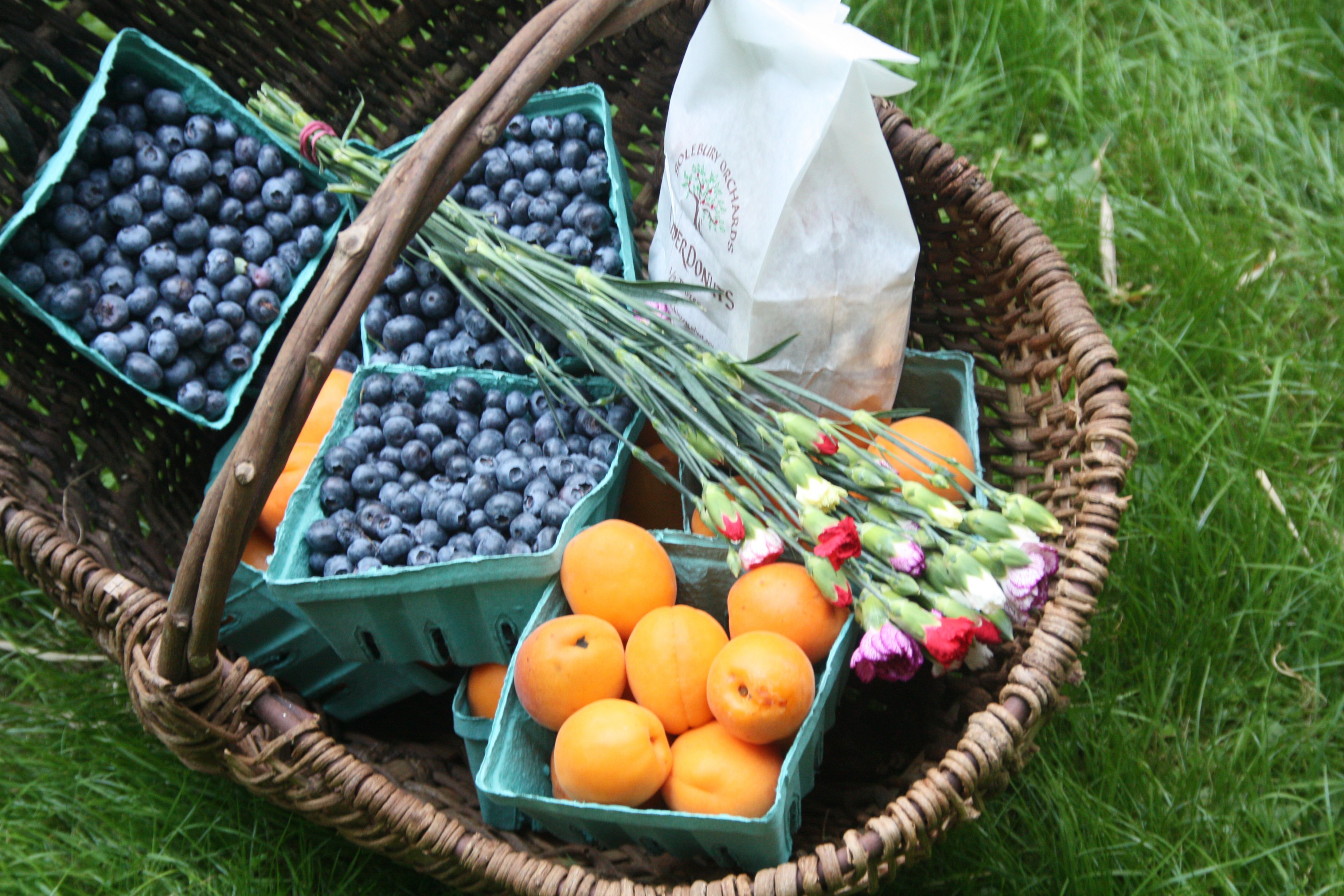This is the first spring that Jim and I will spend living in a nice place. We’ve been in old, crappy complexes before, and ones that look pretty on the outside, but are about 500 square feet too small on this inside, ones where you end up with a view of the parking lot. This spring is different. We have a screened in porch (the excitement never ceases), trees galore, and a river out the backyard. Jim swam in it yesterday; he sat on the rock in the middle of the river, closed his eyes and smiled, letting the current rush around him. And I cursed myself for leaving my camera behind.

But the best thing about this spring is duck, and the local farm that raises it. I’ve spoken about Podere di Melo before but I feel I must bring them up again, being that there’s a few more nearby-people reading my blog now. Podere di Melo farm is… well, they say it best:
Podere di Melo is a Certified Naturally Grown farm in West Amwell, New Jersey. We specialize in foods of the Italian and French countryside. Our products include European vegetables, honey, and a variety of meats including gourmet poultry, duck, lamb, guinea fowl, and heritage pork. Our family is dedicated to sustainable farming practices. We use no synthetic fertilizers, no pesticides, herbicides, or fungicides on our crops. Our animals roam over chemical-free pastures and are never given antibiotics or hormones. We pride ourselves on our humane treatment of our animals, allowing them continual access to pasture and sunshine throughout most of the year.

Please note the words Italian and French countryside, roam, dedicated to sustainable farming, humane treatment, pasture and sunshine. Are you smiling? I am. Podere di Melo’s food is above anything I’ve ever tasted, even organic. Farm-raised on a small farm is just a different thing altogether. I’ve mentioned the chicken before which are raised, in the European tradition, to 12 weeks of age before slaughter (up from 6-8 for industrially-farmed chickens), and I’m sure I’ll mention the pork this coming summer (we got to check out the lazy pigs this weekend, adorable little big guys), but today I’m here for duck.

I’d reserved four ducks online from Podere a month or two ago, knowing I would pick them up this weekend. What I couldn’t foresee however, was the weather. Perfect for walking around the farm, checking out the pigs, and letting Champ check out the horse barn (he couldn’t believe that they made whole houses for animals!). It was the dreamy start to our duck dinner, though I’m sure everything would work out fine without that step.

Instead of the traditional sweet-with-duck, like a l’Orange, we opted for duck with braised sauerkraut. I’m a sauerkraut lover, as is Jim, so when I found Mark Bittman’s easy as pie (easier) recipe for Roasted and Braised Duck with Sauerkraut, we knew we had dinner. Our duck was perfectly sized for my oval dutch oven, leaving enough room for sauerkraut. For the recipe, it’s about as simple as putting the duck in a pot, pot in the oven, wait, pot on stove, sauerkraut in pot, wait, carve and eat. Oh, and don’t forget to drain off and save the fat.

The trick is to cook it in a pot or dutch oven, so that the fat renders and then fries the duck legs on the bottom of the pot. (The other trick, I’m sure, is to buy a farm-raised duck, which are near impossible to mess up; even overcooked I’m sure the flavor would be enough to satisfy.) I drained off all but about 1 tablespoon of the fat after the duck had been roasted, then added a few teaspoons to some parboiled yukon gold potatoes and roasted them at 500 degrees in the oven while the duck cooked with the sauerkraut on the stovetop. Let me tell you: Best. Potatoes. Ever.
The duck was flavorful with a hint of game, succulent, and fork-tender. The sauerkraut lent just the right amount of acid to cut through the fat. It was one of those meals, when you are so full but there’s half a duck breast on your plate, and you are really, truly sorry that you can’t eat another bite. Okay, just one small bite more…

Roasted and Braised Duck With Sauerkraut
2-4 servings
from Mark Bittman’s Recipe of the Day
The quality of the sauerkraut is important here. Just make sure the only ingredients are cabbage and salt; inferior sauerkraut contains preservatives, and the kind sold in cans tastes like tin. Even the best sauerkraut, though, should be rinsed before it is added it to the pan.
1 duck, about 4-5 pounds
Salt and freshly ground black pepper
1 quart sauerkraut, rinsed
2 teaspoons paprika
1/2 cup dry white wine or water
2 bay leaves
Preheat the oven to 375 degrees. Prick the duck all over with a fork, then sprinkle it with salt and pepper and place it in a large, deep, ovenproof skillet or Dutch oven. Roast the duck for about 1 1/2 hours, checking occasionally to make sure it is browning steadily. (If the duck is barely browning, increase the heat by 50 degrees; if it seems to be browning too quickly, reduce the heat slightly.) When it is nicely browned and has rendered a great deal of fat, pour off all but a few tablespoons of the fat and transfer the pan to the top of the stove.
Scatter the sauerkraut around the duck, then sprinkle it with paprika, moisten it with the wine, and tuck the bay leaves in. Turn the heat to low, and cover the pan. Simmer for about 15 minutes, then stir and put some of the sauerkraut on top of the duck.
Cook another 15 minutes or so, until the duck is quite tender. Carve and serve.
















































